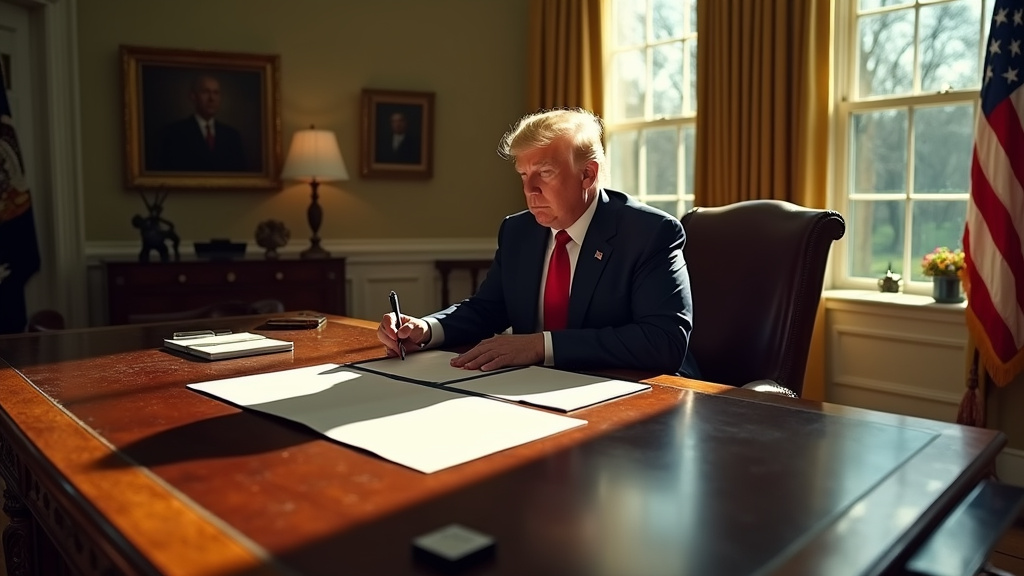In a significant step towards de-escalating transatlantic trade tensions, the United States and the European Union today announced a provisional agreement aimed at resolving a long-standing dispute over European digital services taxes (DSTs). The breakthrough was confirmed jointly by US Trade Representative Katherine Tai and European Commissioner for Trade Valdis Dombrovskis, signaling a mutual commitment to finding a cooperative solution amidst evolving global tax landscapes.
The agreement establishes a transitional framework designed to bridge the gap until comprehensive global tax reforms, currently being finalized under the auspices of the Organisation for Economic Co-operation and Development (OECD), are fully implemented. This interim measure is particularly crucial as it effectively prevents the imposition of retaliatory tariffs previously threatened by the US on a range of European goods. These potential tariffs had been valued at over $3 billion annually, raising concerns across various sectors of the European economy.
Background to the Digital Tax Dispute
The dispute centers on unilateral digital services taxes implemented or planned by several European nations. The US government, particularly under previous administrations but continued under the current one, viewed these taxes as discriminatory, arguing they unfairly target large American technology companies like Google, Apple, Facebook (now Meta), and Amazon. These companies generate significant revenue in European markets but, due to the nature of their business models, may pay relatively little corporate income tax under traditional tax rules that focus on physical presence.
European proponents of DSTs argue that it is necessary to ensure that highly profitable digital companies contribute their fair share to the economies where they operate and generate value. They view DSTs as a temporary measure needed to address perceived loopholes in international tax laws until a global consensus is reached. The US, however, countered these arguments by initiating Section 301 investigations, leading to the threat of steep tariffs on European imports, including goods like French wine, Italian handbags, and German cars, putting immense pressure on European governments.
The Mechanics of the Provisional Agreement
The core of the provisional agreement lies in its transitional nature. While the exact details of the framework have not been fully disclosed, it is understood to provide a mechanism for existing DSTs in some EU countries to remain in place temporarily, but potentially with credits or adjustments linked to future payments under the forthcoming OECD global tax deal (often referred to as Pillar One). In return, the US has agreed to suspend its planned retaliatory tariffs. This creates a stable period, free from escalating trade hostilities, allowing businesses and governments time to adapt to the anticipated global tax changes.
Both USTR Tai and Commissioner Dombrovskis emphasized that this agreement is not a final resolution but a pragmatic step to manage the transition. It underscores the parties’ shared commitment to the OECD process as the preferred path for a permanent, multilateral solution to the challenges of taxing the digital economy. The OECD framework aims to reallocate a portion of the profits of the largest multinational enterprises to the countries where their users and consumers are located, regardless of physical presence, and to establish a global minimum corporate tax rate.
Reactions and Future Steps
The announcement has been met with varied reactions. Major American technology companies, including Google and Meta, were among the first to welcome the agreement. For these firms, the provisional deal offers crucial certainty regarding their tax liabilities and operating environment in key European markets, removing the immediate threat of a trade war that could disrupt their business and supply chains.
Conversely, the agreement has faced criticism from some smaller European nations. While the reasons are complex, concerns may include a perceived loss of sovereign tax authority, disappointment that the agreement might dilute the revenue potential of their unilateral DSTs, or a belief that the EU may have conceded too much to US pressure. These nations might have been relying on DST revenue and view the transitional framework as potentially limiting their fiscal flexibility before the OECD deal is fully in force.
Looking ahead, the provisional agreement is expected to be formally signed in Brussels next month. Before the signing, the text of the agreement will undergo a crucial review process by member states of the European Union. This review is necessary because tax matters require unanimous approval or qualified majority voting depending on the specific legal basis, and member states will need to ensure the agreement aligns with their national interests and legal frameworks. The outcome of this review will be critical for the finalization of the deal.
Ultimately, the agreement aims to provide much-needed stability and certainty for transatlantic businesses operating across borders. By preventing a tit-for-tat tariff escalation and providing a clear path towards the implementation of global tax reforms, the US and the EU hope to create a more predictable and favorable environment for trade and investment in the digital age.












